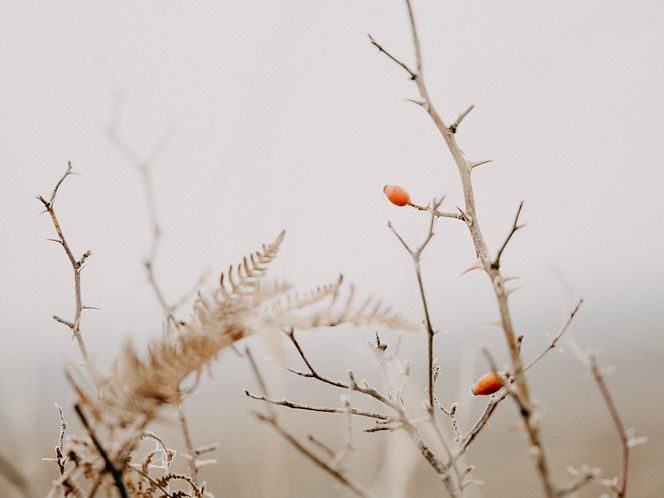I’ve been reading - and talking - a lot about plant blindness lately, and how sad it is how many adults can’t even identify more than five plants growing in their neighborhood. The implications of plant blindness are serious: not only does it indicate a lack of connection to the ecosystem, it can also contribute to a lack of concern about conservation of plant species, many of which are endangered. These are just a few of the painful results of a failure to see plants: I recommend this article from the BBC about the subject.
The good news, however, is that plant blindness can be reversed. With a little bit of attention we can learn to see the plants around us, to differentiate between species, and to appreciate all the wondrous things they do for the ecosystem of which we are a part.
So let’s all join a campaign to prevent plant blindness - or to cure it where it's already a problem. I would like to begin this campaign by helping you all take a closer look at a plant most people believe they know: the common dandelion.
Everyone THINKS they know what dandelions look like, but I once had some fairly plant savvy friends who made “dandelion” wine from one of the plant’s many lookalikes. It did NOT taste nice. Unpleasant flavor isn’t the only danger of misidentifying a dandelion: you might make yourself pretty sick if you eat or make medicine from a plant that resembles dandelion but is not one.
So: do you know how to tell dandelion from it’s lookalikes?

Most of us identify dandelion by the pretty yellow flower. The problem with this method is that there are many plants whose flower heads look very similar to those of dandelion. Fortunately there are some very obvious clues to help differentiate the real dandelion from the fake.
Dandelion’s blossom stands alone atop a single stem. I repeat: each dandelion stem will have one, and only one, flower. The flower is composed of over a hundred florets arranged in a ray pattern from the center. The flower head has two sets of bracts (tiny, leaf-like structures): one set points up, and one set points down.
Dandelion:

If there are multiple flowers on one stem, the plant is not a dandelion.
If there’s a flat disc in the middle of the flower, the plant is not a dandelion.
If the blossom has fewer than 100 “petals” (actually florets), the plant is not a dandelion.
Not dandelions:

Next, we consider the stem. As I said, each dandelion blossom stands alone at the top of single stem. The stems are leafless, unbranching, and hollow. They are sometimes purplish in color. Sometimes they have fine fuzz or hair. They ooze a white, milky sap when broken.
Dandelion:


If the stem has branches, the plant is not a dandelion.
If the stem has more than one blossom, the plant is not a dandelion.
If leaves grow up the stem, the plant is not a dandelion.
If the stem is solid rather than hollow, the plant is not a dandelion.
Not Dandelion:

Now for the leaves. Dandelion has “basal leaves”, which means they grow at the base of the plant. The leaves form a “rosette” - a circle of leaves close to the ground. They can lie flat/sprawl along the ground, or they can grow upright. They vary a bit in shape and size from one plant to another, but in general they are longer than they are wide, and the edges are either “toothed” - which is what it sounds like, something akin to the “teeth” of a carved Jack O’Lantern - or “lobed”, which means they have distinct protrusions which can be rounded or rectangular. They are always smooth and hairless. They, too, ooze a white sap when broken. They are bitter to the taste: the degree of bitterness varies with the season and the dandelion’s habitat, but there will always be some bitterness.
Dandelion:

If the leaves grow up the plant stem, the plant is not a dandelion.
If the leaves are shaped like teardrops or blades, or have straight edges, the plant is not a dandelion.
If the leaves are hairy or prickly, the plant is not a dandelion.
Not Dandelion:

What about the root of the dandelion? Dandelion’s have a strong, fleshy, very deep taproot. If you dig up the root, you are only getting the very top of a long, strong, tenacious root. They are generally tan to brown in color. They ooze the same white sap as the leaves and stems. They taste very bitter.
Dandelion:

If the roots are fibrous (composed of many smaller hairlike growths), the plant is not a dandelion.
If the roots are bulbs, the plant is not a dandelion.
If the roots are stolons/runners, the plant is not a dandelion.
Not Dandelion:

Finally, we look at the mature seed heads of dandelion. We’re all familiar with the white puffball we all loved to blow on while making wishes as children. Okay some of us still do that. If you look closely at a dandelion seed head, you’ll see it’s composed of hundreds of individual seeds, usually of a brownish color, tenuously connected to a white cushion-like receptacle. Each seed has a parachute of fine white “pappi”: silky, hair like bristles which catch the slightest air current to allow the dandelion seeds to spread far and wide.
Dandelion:

Also Dandelion:

If you can’t see individual seeds at the center of the ball of fluff, the plant is not a dandelion.
If the fluff is a color other than white, the plant is not a dandelion.
Not Dandelion:

Now I hope you’ll go outside and make friends with some dandelions, and maybe spend a little time learning about all the ways they can be used for food, medicine, and magic. The better you get to know them, the less common they’ll seem: I promise.

Comments